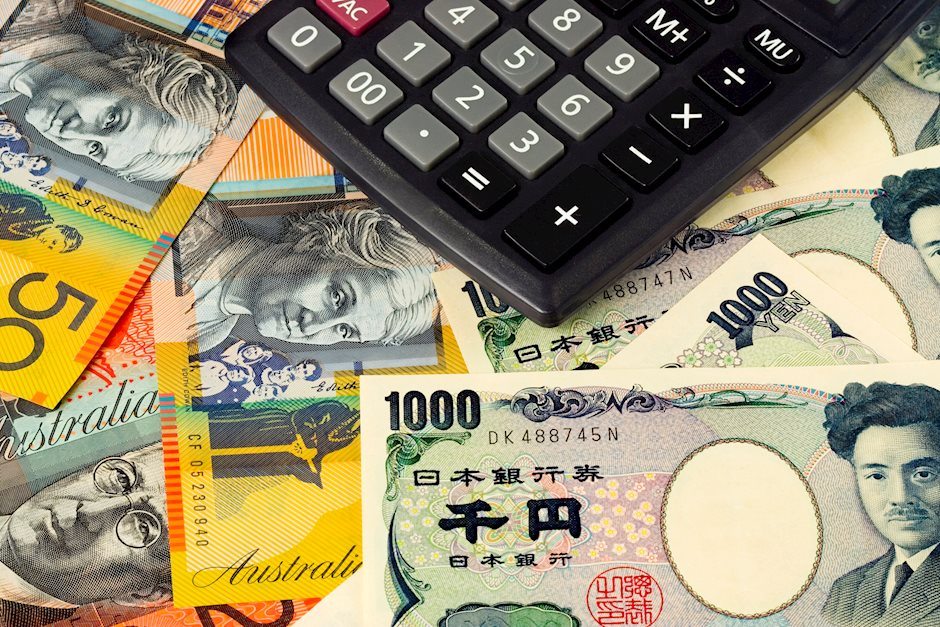AUD/JPY remains below 100.00, upside potential seems possible due to hawkish RBA
- AUD/JPY depreciated as BoJ Ueda reiterated that interest rate hikes would proceed gradually.
- BoJ Governor Ueda also emphasized the importance of carefully assessing the impact of FX movements.
- RBA Bullock stated that current interest rates will remain unchanged until the central bank is confident about the inflation outlook.

The AUD/JPY cross has trimmed its daily gains and trades near 99.90 during European trading hours on Monday. Meanwhile, the Japanese Yen (JPY) faced headwinds following remarks from Bank of Japan (BoJ) Governor Kazuo Ueda. Ueda reiterated that interest rate hikes would proceed gradually, contingent on the economy meeting expectations, but did not specify a timeline for future increases.
In a subsequent statement, Ueda emphasized the importance of carefully assessing the impact of foreign exchange (FX) movements on the economy, price forecasts, and associated risks at each policy meeting. He warned that failing to adjust monetary support appropriately could necessitate rapid rate hikes in the future. Ueda refrained from commenting on short-term FX fluctuations.
Japan's Finance Minister Katsunobu Kato issued a warning on Friday, stating that the government will closely monitor the foreign exchange (FX) market with heightened vigilance. Kato emphasized that appropriate measures would be taken to address any excessive movements in the currency.
The Australian Dollar (AUD) gained ground following hawkish comments from Reserve Bank of Australia (RBA) Governor Michele Bullock last Thursday. Bullock emphasized that current interest rates are sufficiently restrictive and will remain unchanged until the central bank is confident about the inflation outlook.
Recent data indicated a slowdown in employment growth for October, while the unemployment rate held steady, highlighting the resilience of the labor market. Market focus now shifts to the release of the latest RBA meeting minutes on Tuesday, which could offer further insights into the central bank's policy stance.
Central banks FAQs
Central Banks have a key mandate which is making sure that there is price stability in a country or region. Economies are constantly facing inflation or deflation when prices for certain goods and services are fluctuating. Constant rising prices for the same goods means inflation, constant lowered prices for the same goods means deflation. It is the task of the central bank to keep the demand in line by tweaking its policy rate. For the biggest central banks like the US Federal Reserve (Fed), the European Central Bank (ECB) or the Bank of England (BoE), the mandate is to keep inflation close to 2%.
A central bank has one important tool at its disposal to get inflation higher or lower, and that is by tweaking its benchmark policy rate, commonly known as interest rate. On pre-communicated moments, the central bank will issue a statement with its policy rate and provide additional reasoning on why it is either remaining or changing (cutting or hiking) it. Local banks will adjust their savings and lending rates accordingly, which in turn will make it either harder or easier for people to earn on their savings or for companies to take out loans and make investments in their businesses. When the central bank hikes interest rates substantially, this is called monetary tightening. When it is cutting its benchmark rate, it is called monetary easing.
A central bank is often politically independent. Members of the central bank policy board are passing through a series of panels and hearings before being appointed to a policy board seat. Each member in that board often has a certain conviction on how the central bank should control inflation and the subsequent monetary policy. Members that want a very loose monetary policy, with low rates and cheap lending, to boost the economy substantially while being content to see inflation slightly above 2%, are called ‘doves’. Members that rather want to see higher rates to reward savings and want to keep a lit on inflation at all time are called ‘hawks’ and will not rest until inflation is at or just below 2%.
Normally, there is a chairman or president who leads each meeting, needs to create a consensus between the hawks or doves and has his or her final say when it would come down to a vote split to avoid a 50-50 tie on whether the current policy should be adjusted. The chairman will deliver speeches which often can be followed live, where the current monetary stance and outlook is being communicated. A central bank will try to push forward its monetary policy without triggering violent swings in rates, equities, or its currency. All members of the central bank will channel their stance toward the markets in advance of a policy meeting event. A few days before a policy meeting takes place until the new policy has been communicated, members are forbidden to talk publicly. This is called the blackout period.
Author

Akhtar Faruqui
FXStreet
Akhtar Faruqui is a Forex Analyst based in New Delhi, India. With a keen eye for market trends and a passion for dissecting complex financial dynamics, he is dedicated to delivering accurate and insightful Forex news and analysis.
















